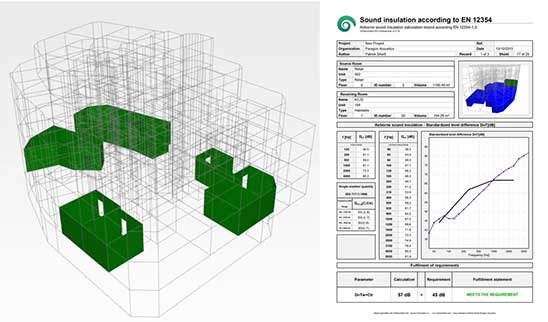acoustic studies form

ACOUSTIC STUDIES NORTH ZONE
Juan de Garay 11
48003 Bilbao - Bizkaia - España
(Poligono Industrial Erletxe)
- Telefono:
- +34 944701951

SOUTH ZONE ACOUSTIC STUDIES
Urbanizacion Hacienda Las Chapas. Avenida 2
28960 Marbella - Malaga - España
- Telefono:
- +34 900808578

Acoustics is a branch of physics that studies noise, infrasound and ultrasound, that is, acoustic waves that propagate through matter (both solid and liquid or gaseous) (they cannot propagate in a vacuum) by means of physical models. and mathematicians. For practical purposes, acoustics studies the production, transmission, storage, perception or reproduction of sound. Acoustic engineering is the branch of engineering that deals with the technological applications of acoustics. Sound is a mechanical wave that is defined as the propagation of a disturbance in the air. The speed of sound is estimated at 345 m / s or 1,242 km / h at 23ºC, with a variation of 0.17% per degree centigrade. The science that is responsible for its study is acoustics, which is relatively new from a scientific point of view. In 1887 the English physicist Lord Rayleigh wrote the theoretical foundations of acoustics and in the late 18th century Wallace Clement Sabine made important applications of acoustics in architecture.
Fill in the following form and we will assist you as soon as possible. Thanks
Architectural acoustics studies the properties of sound behavior for its adequate propagation inside an enclosure. Said behavior is variable depending on physical phenomena such as early reflections, reverberation, echo, and resonance. The energy radiated by a sound source in a closed room reaches a listener located at any point in it in two different ways: a part of the energy arrives directly (direct sound), that is, as if the source and receiver were in free space, while the other part does so indirectly (reflected sound), as it is associated with the successive reflections that the sound wave undergoes when it hits the different surfaces of the room. The energy radiated by a sound source in a closed room reaches a listener located at any point in it in two different ways: a part of the energy arrives directly (direct sound), that is, as if the source and receiver were in free space, while the other part does so indirectly (reflected sound), as it is associated with the successive reflections that the sound wave undergoes when it hits the different surfaces of the room.